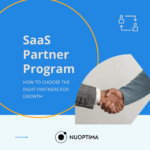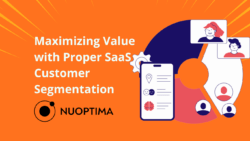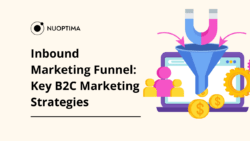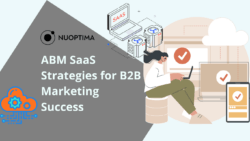Did you know that 87% of marketers report that account-based marketing (ABM) delivers a higher return on investment (ROI) than other marketing activities[1]? This statistic emphasizes the significant impact of ABM in targeting high-value accounts with personalized campaigns, ensuring efficient use of resources and maximizing impact.
ABM is especially beneficial for B2B companies because it focuses on building relationships with key decision-makers within target accounts, resulting in more meaningful and effective engagements. In this article, we will explore what account-based marketing is, delve into its numerous benefits, and present a list of top B2B SaaS account-based marketing strategies to help you succeed in ABM.
What is Account-Based Marketing?

Account-Based Marketing (ABM) is a targeted business marketing strategy that treats individual customer accounts as separate markets. Unlike traditional marketing, where the goal is to attract a broad audience, ABM focuses on a select group of high-value accounts. This approach involves tailoring marketing efforts to the unique needs and challenges of each target account, resulting in highly personalized campaigns.
A successful ABM SaaS marketing strategy begins with close collaboration between sales and marketing teams. Together, they identify and choose the target accounts that demonstrate the highest potential to generate revenue for the business. Once these accounts are selected, they create customized strategies and content to engage and build relationships with the key decision-makers within those accounts. The effectiveness of an ABM strategy is measured by the level of engagement and the revenue generated from these targeted accounts rather than the number of leads.
Account-Based Marketing’s distinctiveness lies in its emphasis on quality over quantity. By focusing efforts on a few high-value accounts, ABM ensures that marketing activities are more precise and effective. This approach typically results in shorter sales cycles, higher conversion rates, and stronger customer relationships, leading to a substantial return on investment.
Account-Based Marketing vs Traditional Marketing
Although account-based marketing and traditional marketing are both commonly used marketing strategies, they differ significantly in their approach, focus, and execution. Let’s explore some of these key differences:
| Account-Based Marketing | Traditional Marketing | |
| Targeting and Focus | The focus is on a group of high-value target accounts, and marketing efforts are concentrated on potential high-value companies or accounts. | Targets a wide audience or market segment with campaigns that aim to reach as many people as possible to generate leads and increase brand awareness. |
| Personalization | Highly personalized and tailored marketing messages for each target account. Content and interactions are also customized based on the specific needs, pain points, and characteristics of the target accounts. | Uses more generalized messaging intended for a wider audience. Personalization is usually less specific and may only be divided by demographic data. |
| Sales and Marketing Alignment | Involves teamwork between sales and marketing teams. Both units jointly identify key accounts, develop customized strategies, and evaluate success. | Involves marketing and sales teams working independently, with marketing focusing on generating leads, which are then handed over to sales. |
| Sales Cycle | Characterized by a shorter sales cycle because of the targeted, personalized approach that addresses the specific needs of decision-makers within the target accounts. | Can have longer sales cycles as it involves broader lead generation and many leads needing to be qualified and nurtured over time. |
| Resource Allocation | Resources are concentrated on a few high-value accounts. | Resources are spread across a wide audience. |
Benefits of ABM for B2B SaaS Businesses
Research shows that companies that implement an account-based marketing strategy attest to at least 77% growth in their revenue[2]. As if this isn’t a compelling enough argument for utilizing ABM in your B2B SaaS, let’s look at some of the other benefits that come with account-based marketing:
Personalized Marketing Efforts
ABM allows for highly personalized marketing campaigns. By tailoring messages and content to the specific needs and pain points of individual accounts. You can effectively engage with prospects and build stronger relationships, which ultimately lead to higher conversions.
Shorter Sales Cycles
Because ABM marketing focuses on high-value accounts with personalized content and direct engagement, it often results in shorter sales cycles. Decision-makers receive the information they need in a more relevant and timely manner, which accelerates the buying process.
Sales and Marketing Collaboration
Account-Based Marketing fosters collaboration between your sales and marketing departments. This alignment means that both teams work together to identify target accounts, develop strategies, and track progress. This not only leads to more cohesive and successful campaigns but also promotes team building and effective communication.
Improved Return on Investment
ABM typically yields a higher ROI compared to other marketing strategies because it focuses on high-value target accounts that are more likely to convert, making marketing efforts more efficient and effective.
Increased Customer Lifetime Value
By focusing on high-value accounts and cultivating stronger relationships, Account-Based Marketing can increase customer lifetime value. Developing lasting connections with key accounts often leads to recurring business and opportunities for upselling.
Key Components of Successful ABM Strategies
The success of ABM marketing hinges on three indispensable components: Personalization, Technology, and Alignment.
- Personalization goes beyond basic customization; it perfects the art of crafting messages that speak directly to an account’s unique needs and interests.
- Technology serves as the backbone, with CRM and marketing automation tools providing the insights needed to tailor these personalized experiences effectively. And finally,
- Alignment between sales and marketing teams is paramount, ensuring a cohesive approach that unites efforts toward common goals.
These components work together to create an ABM strategy that not only captures attention but also resonates profoundly with its target audience, resulting in higher engagement and stronger, more meaningful connections. Together, they form the foundation of a successful account-based marketing strategy.
Top B2B SaaS Account-Based Marketing Strategies
Now that you’re equipped with solid knowledge of what Account-Based Marketing is, let’s explore the top strategies that B2B SaaS companies use to reach and engage with their target accounts and turn prospects into partners.
1. Identify High-Value Accounts and Create Target Account Lists

The foundation of ABM lies in identifying high-value accounts. It involves using data to spotlight those with the highest Lifetime Value (LTV), not just immediate buyers. Start by analyzing your customer base and examining data to uncover trends that define your most profitable engagements. For example, are they part of a specific industry? Do they face similar challenges? This information helps shape your Ideal Customer Profile (ICP).
Once you have your ICP, utilize tools like LinkedIn Sales Navigator. Tools like this aid in pinpointing companies that align with your ICP criteria, but the search doesn’t stop there. Industry forums, trade show lists, and industry news also serve as invaluable resources for uncovering high-value prospects.
Real-World Example: For instance, Salesforce exemplifies the efficacy of data-driven targeting. By segmenting their markets, they are able to identify industries primed for their CRM solutions. Their approach extends beyond engagement and focuses on building lasting partnerships. Salesforce’s strategy demonstrates the power of informed selection, enabling targeted and efficient marketing efforts.
Additionally, Salesforce’s flagship event, Dreamforce, plays a crucial role in strengthening these partnerships. In addition to their digital marketing, outreach, and nurturing efforts, Dreamforce offers a platform to further build on existing client relationships and foster new ones, which contributes to the development of the Salesforce ecosystem.
2. Utilize Interactive Demos and Personalized Gifting
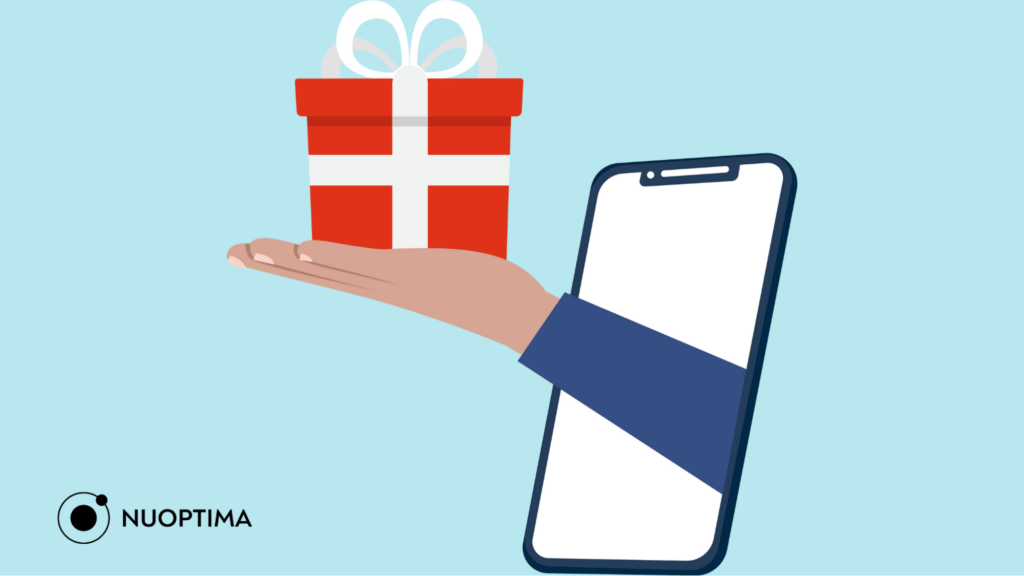
Pairing interactive demos with personalized gifting forms a dynamic strategy for deepening engagement. Demos provide a hands-on exploration of your solution and can be tailored to precisely address the specific needs and pain points of your target accounts. This direct interaction not only showcases your product’s capabilities but also demonstrates your dedication to solving their unique challenges.
Following a demo with a personalized gift adds a thoughtful touch that distinguishes your brand and can significantly enhance relationships. Whether it’s a customized item relevant to their business or a thoughtful piece reflecting shared interests, this approach leaves a lasting impression, transforming a standard interaction into a memorable experience.
Real-World Example: Zendesk effectively employs this strategy by tailoring demos to highlight how their platform streamlines customer support processes. Post-demo, Zendesk often sends personalized gifts, reinforcing the demo’s key messages and showing appreciation for the prospect’s time.
Another individual who exemplifies this strategy is Jordan Schlosberg, the founder of the HR tech platform Atlas and previously Prosapient, a Series B startup. He sends champagne bottles to the founders of every startup in the UK that announces a funding round. This personalized gesture not only captures attention but also symbolizes celebration, fostering meaningful connections.
To delve deeper into Jordan Schlosberg’s growth journey, listen to this episode of our SaaS Minds podcast.
3. Utilize Customer Success Stories

Sharing customer success stories is a powerful method to showcase the tangible impact of your solution. These stories provide real-world examples of how your product addresses specific challenges, delivering value to your audience and driving success. By highlighting the journey of companies similar to your target accounts, success stories make it easier for prospects to envision achieving similar positive results with your solution.
Select stories that resonate with the industries and challenges of your target accounts to maximize relevance and impact. This strategy not only captures attention but also builds credibility and trust in your solution.
Real-World Example: Asana effectively utilizes customer success stories to demonstrate how their project management tool improves productivity and collaboration. By sharing detailed narratives from various industries, Asana showcases its versatility and effectiveness, encouraging potential customers to envision how it could benefit their own teams. These success stories act as powerful testimonials, strengthening Asana’s value proposition.
To further amplify this approach, consider featuring video testimonials on your YouTube channel. For deeper insights into leveraging YouTube for SaaS growth, explore our webinar on this topic.
4. Leverage Multichannel Marketing
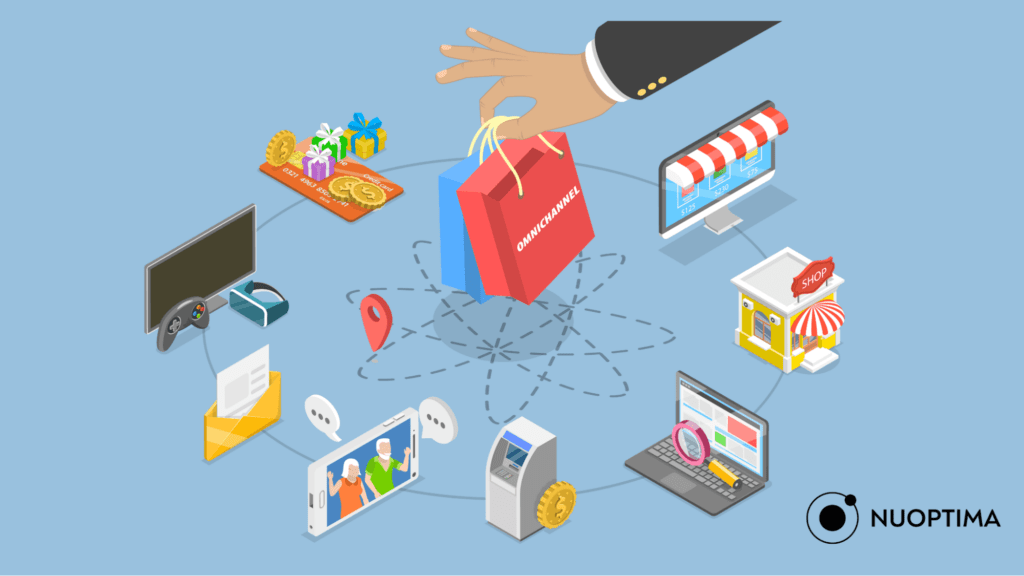
To see success in account-based marketing, you can’t limit your efforts to one channel. Rather, your brand should connect with your target accounts across all the platforms they use. This means coordinating your message across email, social media, direct mail, and in-person events to create a consistent narrative. A multi-channel strategy ensures that your brand is not only visible, but also provides a complete brand experience that engages your target accounts at every opportunity.
The key here is consistency and cohesion. Whether it’s a targeted ad on LinkedIn or an engaging webinar, each piece of content should reinforce your brand’s value proposition. This approach amplifies your presence and firmly establishes your brand in the minds of your target accounts, even through dark social channels, where content is shared privately and isn’t easily tracked.
Real-World Example: For instance, Mailchimp adopts an integrated approach by seamlessly combining email campaigns with social media ads and informative webinars. Their strategy ensures that Mailchimp maintains a consistent and compelling presence, whether a prospect is scrolling through their social feed or checking their inbox. This multichannel engagement nurtures leads through a cohesive journey, ultimately enhancing Mailchimp’s visibility and impact.
Another notable example is Airbnb. The company’s multichannel marketing strategy during its ‘Live There’ campaign is a great example of a unified approach in action. They coordinated their message across TV ads, social media, and email marketing to promote the idea of travelers living like locals. This consistent narrative across channels not only amplified their reach but also significantly boosted user engagement, demonstrating the effectiveness of a cohesive multichannel approach.
5. Targeted Emails with Personalized Content

Targeted emails with personalized content cut through the digital noise and ensure you deliver messages that resonate on a personal level. By leveraging insights from your ICP, each email can be meticulously tailored to address each recipient’s specific needs, challenges, and opportunities. This approach makes every email feel like it was tailor-made for the reader by highlighting your solution’s relevance to their unique situation.
Real-World Example: As a growth agency in SaaS, NUOPTIMA employs a highly personalized approach by incorporating bespoke videos in our emails. These videos showcase a comprehensive analysis of the recipient’s website, including performance metrics related to organic and paid traffic, conversion rates, and technical benchmarks. We then compare these insights with data from a few of their competitors. By doing this, we are able to deliver substantial upfront value and foster meaningful engagement.
6. Revenue Expansion Through Account Relationships

Rather than aiming for immediate gains, this strategy prioritizes long-term investment in a select group of high-value accounts. By cultivating strong relationships with these accounts, you’re not only retaining customers but also laying the groundwork for strategic upselling and cross-selling opportunities. It’s not about pushing products; it’s about understanding and meeting evolving needs by offering solutions that genuinely enhance value.
Real-World Example: HubSpot exemplifies effective revenue expansion through strategic account nurturing. By deeply understanding client challenges, HubSpot offers an evolving suite of integrated solutions, ranging from marketing automation to CRM. This approach not only fosters customer loyalty but also encourages the adoption of additional services, driving organic revenue growth.
7. Play the Long-Term Game
ABM marketing requires patience and a strategic outlook. It’s a methodical approach that prioritizes a commitment to cultivating lasting relationships over quick wins. Implementing ABM means investing significant time and resources, not just to attract but also to nurture meaningful connections with select accounts. Recognizing and celebrating small victories along the way sustains momentum, reinforcing that progress is being made, even if not immediately visible.
Real-World Example: Canva’s approach to Account-Based Marketing showcases a strategic commitment to building long-term relationships, especially with educators and nonprofits. Rather than pursuing immediate sales, Canva prioritized becoming a valuable partner by tailoring its offerings to the unique needs of these sectors. This patient strategy has established Canva as an indispensable resource, turning users into active brand advocates and illustrating the power of sustained engagement in ABM.
Invest in the Services of a Dedicated Growth Agency – NUOPTIMA
NUOPTIMA is a dedicated growth and SaaS lead generation agency that specializes in helping businesses develop and implement strategies to grow and scale effectively. Our expertise in account-based marketing is designed to help you engage meaningfully with high-value accounts and convert prospects into loyal, returning clients.
Having collaborated with over 60 category-leading businesses, we have a proven track record of driving significant growth in revenue and client relationships through tailored ABM strategies. We analyze your business and customer base to develop an ideal customer profile and create personalized marketing campaigns. This approach ensures that your marketing efforts resonate deeply with your target audience, leading to higher engagement and conversion rates.
In addition to ABM, we excel in lead generation by developing high-converting SaaS lead funnels. These funnels transform qualified clicks into loyal customers, as exemplified by our collaboration with Bezos. With our help, the Fulfillment-as-a-Service (FaaS) company saw a remarkable 223% increase in leads within just 89 days, showcasing our ability to deliver substantial growth results.
Partnering with NUOPTIMA means leveraging expert guidance, innovative tactics, and customized solutions to drive tangible results. Ready to unlock your full growth potential? Book a free discovery call today and embark on your journey to success.
Closing Reflection
When it comes to B2B SaaS marketing, many businesses are turning to account-based marketing as a valuable option. This strategy focuses on precision rather than volume, offering a tailored approach to engaging high-value accounts.
By emphasizing personalization, utilizing technology, and promoting alignment between sales and marketing teams, businesses can build stronger relationships and achieve meaningful outcomes such as increased revenue.
That said, it’s important to remember that success with ABM requires patience and a long-term perspective, as it demands dedication and persistence to see significant results. Real-world examples have shown that ABM has the power to create lasting partnerships and turn customers into advocates, so by incorporating these strategies into your marketing and sales efforts, you can navigate the complexities of the B2B SaaS landscape with confidence.
FAQ
An account-based marketing strategy targets specific high-value accounts with personalized marketing efforts. It involves creating tailored campaigns for each account to address their unique needs and challenges, fostering deeper engagement and driving higher conversion rates and revenue.
Traditional marketing targets a broad audience to generate leads, while account-based marketing focuses on a select group of high-value accounts. ABM uses personalized, targeted campaigns for each account, allowing for a more strategic and efficient use of resources.
The key components of account-based marketing include account selection and research, personalized content creation, coordinated sales and marketing efforts, tech-based multi-channel engagement, and data-driven measurement and optimization. These elements work together to effectively target and engage high-value accounts.
